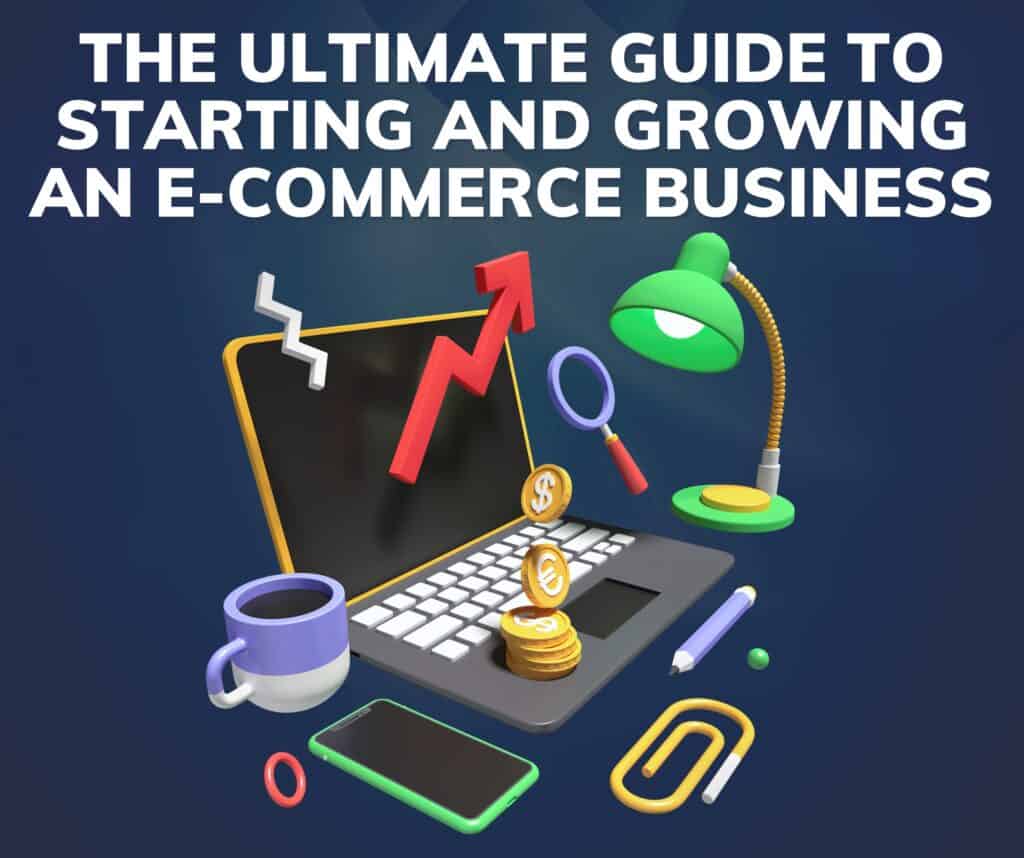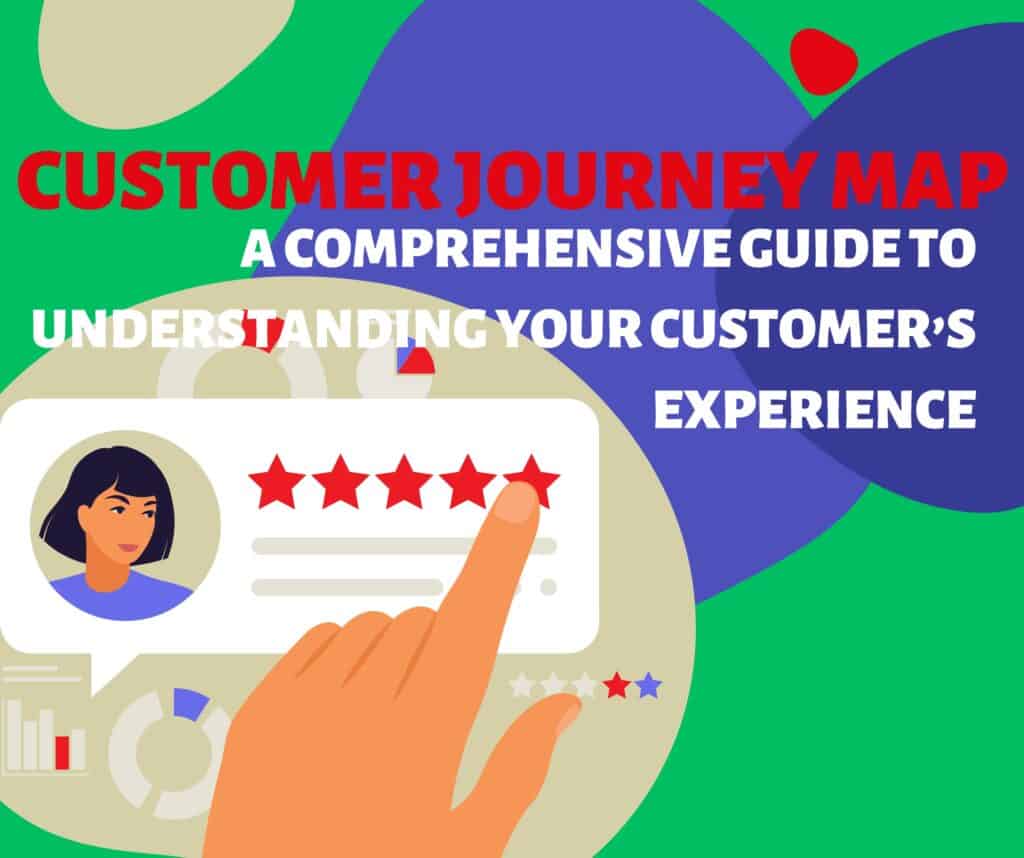The freelancing industry has witnessed remarkable growth in recent years, driven by technological advancements and a shift in work culture. With the rise of remote work, many professionals are turning to freelancing as a viable alternative to traditional employment. This shift allows individuals to leverage their skills on a project-by-project basis, offering services to clients from around the globe. According to recent studies, millions of freelancers now contribute significantly to the economy, providing flexibility and diverse opportunities for both workers and businesses.
However, as the freelancing landscape expands, so do the number of platforms designed to connect freelancers with clients. Choosing the right freelancing platform is crucial for your success as a freelancer. Each platform comes with its own set of features, user experiences, and target markets, which can significantly affect your ability to find work, manage projects, and get paid. The right choice can help you maximize your income potential, build a strong client base, and enhance your overall freelance experience.
The purpose of this article is to guide you through the myriad of freelancing platforms available today. We’ll provide an in-depth analysis of the most popular platforms, explore their features, advantages, and disadvantages, and offer tips on how to choose the one that best fits your skills and goals. Whether you are a seasoned freelancer looking to switch platforms or a newcomer eager to start your freelance journey, this guide aims to equip you with the knowledge you need to make informed decisions and thrive in the freelancing world.
Launch your online business journey today. Click below!
Try Wealthy Affiliate (For Free).
What Are Freelancing Platforms?
Freelancing platforms are online marketplaces that serve as intermediaries between freelancers and clients seeking various services. They provide a structured environment for freelancers to showcase their skills and connect with potential clients who require specific tasks to be completed. These platforms have become essential tools in the gig economy, facilitating project-based work across various industries, including writing, graphic design, programming, marketing, and more.
Definition of Freelancing Platforms
At their core, freelancing platforms are digital platforms that allow independent workers (freelancers) to offer their services to a global market. They typically feature profiles where freelancers can present their skills, experiences, and portfolios. Clients can browse these profiles to find suitable candidates for their projects. Some platforms also include rating and review systems that help establish credibility and trust between freelancers and clients.
How They Connect Freelancers with Clients
Freelancing platforms streamline the hiring process by providing a centralized location for job listings and applications. Here’s how they facilitate connections:
- Job Listings: Clients post job opportunities detailing the project requirements, deadlines, and budget. This makes it easy for freelancers to find relevant gigs.
- Search and Filter Options: Freelancers can search for jobs based on criteria such as category, skill level, or payment type. This enables them to find opportunities that match their expertise and interests.
- Proposal Submissions: Freelancers submit proposals to clients, outlining their qualifications, project approaches, and pricing. This allows freelancers to tailor their applications to meet specific client needs.
- Communication Tools: Most platforms offer built-in messaging systems that allow freelancers and clients to communicate throughout the project, ensuring clarity and collaboration.
- Payment Processing: Freelancing platforms handle payments securely, providing a level of protection for both parties. Clients can pay through the platform, which then releases funds to freelancers upon project completion.
Overview of Different Types of Freelancing Platforms
Freelancing platforms can be broadly categorized based on their features, target audiences, and the nature of work they facilitate. Here are some common types:
- General Freelancing Platforms: These platforms cater to a wide range of professions and skills. Examples include Upwork and Freelancer.com, where freelancers can find various job listings across multiple industries.
- Niche Freelancing Platforms: These platforms focus on specific industries or skill sets, connecting specialized freelancers with targeted clients. For instance, platforms like 99designs cater exclusively to designers, while Toptal focuses on top-tier tech talent.
- Microtask Platforms: These platforms allow freelancers to complete small, quick tasks for clients, often with minimal commitment. Examples include Fiverr and Amazon Mechanical Turk, where freelancers can offer services starting at low rates.
- Remote Work Platforms: These platforms are designed to facilitate long-term remote work arrangements, often featuring full-time or part-time job listings. Companies like Remote.co and We Work Remotely focus on connecting freelancers with companies offering remote positions.
- Creative Portfolio Platforms: These platforms allow freelancers, especially in creative fields, to showcase their work portfolios and attract clients. Behance and Dribbble are popular examples where designers can display their projects.
Popular Freelancing Platforms
In the bustling world of freelancing, several platforms stand out as leaders in connecting freelancers with clients. Below, we delve into the details of some of the most popular freelancing platforms, highlighting their features, advantages, and ideal user base.
Upwork
Description and Features
Upwork is one of the largest freelancing platforms globally, offering a wide array of job categories from writing and design to programming and marketing. It features a user-friendly interface where freelancers can create detailed profiles, showcasing their skills, experience, and portfolios. The platform allows clients to post job listings, and freelancers can submit proposals for projects that interest them.
Key features of Upwork include:
- Time Tracking: Freelancers can use built-in time tracking tools for hourly jobs, ensuring accurate billing.
- Workroom Collaboration: This feature facilitates real-time communication and file sharing between freelancers and clients.
- Payment Protection Plans: Upwork offers payment protection plans to ensure that freelancers get paid for their work.
Pros and Cons
- Pros:
- Large client base, increasing job opportunities.
- Variety of project types, catering to different skills.
- Comprehensive tools for communication and project management.
- Cons:
- High service fees, ranging from 5% to 20% depending on earnings.
- Competitive marketplace, making it difficult for new freelancers to secure jobs initially.
Best for: Upwork is ideal for freelancers across various fields, especially in writing, programming, graphic design, and digital marketing. It suits both entry-level freelancers and seasoned professionals looking for substantial projects.
Fiverr
Description and Features
Fiverr operates on a unique model where freelancers create “gigs” that outline their services, pricing, and delivery timelines. This platform emphasizes quick and affordable services, with starting prices often set at $5 (hence the name). Users can browse gigs by category and select based on their needs.
Key features of Fiverr include:
- Gig Packages: Freelancers can offer multiple service tiers (basic, standard, and premium) for varied pricing.
- Custom Offers: Clients can request personalized offers from freelancers for specific projects.
- Fiverr Pro: A premium service that connects clients with vetted, high-quality freelancers.
Pros and Cons
- Pros:
- Easy to use and navigate for both freelancers and clients.
- Ability to set your prices and showcase your work in a structured format.
- Large audience, making it easier to find clients.
- Cons:
- High service fees (20% on each transaction).
- Emphasis on lower-priced gigs can undervalue skilled work.
Best for: Fiverr is best suited for creative professionals, such as graphic designers, writers, and digital marketers, especially those looking to offer quick, affordable services or specialized skills.
Affiliate Notice: This post includes affiliate links, which means I may earn a commission if you make a purchase. These links provide access to valuable resources like free training and tools for your online success.
Try Wealthy Affiliate (For Free).
Freelancer.com
Description and Features
Freelancer.com is another well-established platform that offers a broad range of project types. It operates on a bidding system where freelancers submit proposals to clients, competing for projects based on their skills and prices. The platform features a vast array of job categories, including web development, graphic design, and content writing.
Key features of Freelancer.com include:
- Milestone Payments: Clients can set up milestone payments for long-term projects, ensuring freelancers get paid as they complete specific tasks.
- Contests: Clients can host contests for projects (like logo design), allowing freelancers to submit their work and compete for the job.
- Mobile App: Freelancer.com has a mobile app for freelancers to manage their projects on the go.
Pros and Cons
- Pros:
- Wide range of job categories and opportunities.
- Competitive bidding can lead to higher earnings for skilled freelancers.
- Milestone payments provide financial security.
- Cons:
- High competition, especially for lower-priced jobs.
- Fees can add up, especially for freelancers who participate in contests.
Best for: Freelancer.com is ideal for freelancers who are comfortable bidding on projects and can thrive in competitive environments. It is suitable for writers, designers, and developers looking for a mix of short-term and long-term projects.
Toptal
Description and Features
Toptal is a premium freelancing platform that connects clients with the top 3% of freelance talent in software development, design, and finance. Toptal’s rigorous screening process ensures that only highly qualified freelancers are accepted, providing clients with top-notch professionals for their projects.
Key features of Toptal include:
- Curated Talent Pool: Toptal’s stringent vetting process ensures clients work with highly skilled freelancers.
- Personalized Matching: Toptal matches freelancers with projects based on their specific skills and expertise.
- Client Testimonials: The platform showcases client feedback to maintain transparency and trust.
Pros and Cons
- Pros:
- Access to high-paying projects and reputable clients.
- Focus on quality ensures better opportunities for top talent.
- Comprehensive support for both freelancers and clients.
- Cons:
- Stringent application process can be challenging for many freelancers.
- Limited to highly skilled professionals, making it less accessible for beginners.
Best for: Toptal is best for highly experienced freelancers in software development, UX/UI design, and finance. It’s ideal for professionals seeking well-compensated projects with reputable clients.
Guru
Description and Features
Guru is a versatile freelancing platform that allows freelancers to showcase their skills and experience while offering a wide range of job categories. It features a workroom that facilitates collaboration and communication between freelancers and clients.
Key features of Guru include:
- Workroom: A centralized space for project management, communication, and file sharing.
- Flexible Payment Options: Freelancers can choose to be paid by the hour, per project, or via milestone payments.
- Portfolio Showcase: Freelancers can present their work to attract clients easily.
Pros and Cons
- Pros:
- User-friendly interface and tools for project management.
- Diverse job categories and opportunities.
- Lower fees compared to some competitors.
- Cons:
- Smaller client base than platforms like Upwork or Fiverr.
- Limited visibility for new freelancers without an established portfolio.
Key Features to Look for in a Freelancing Platform
When choosing a freelancing platform, it’s crucial to consider various features that can enhance your experience as a freelancer or client. Each platform offers different tools and functionalities, and understanding these can help you make an informed decision. Here are some key features to look for in a freelancing platform:
Ready for a fresh start? Start your online business now
Try Wealthy Affiliate (For Free).
User Interface and Ease of Navigation
A user-friendly interface is essential for a positive experience on any freelancing platform. A well-designed platform should have a clear layout that allows users to easily navigate through profiles, job listings, and messages. Key aspects to consider include:
- Intuitive Design: The platform should have a clean and organized layout, making it easy to find relevant information without confusion.
- Search and Filter Options: Effective search tools enable users to filter jobs or freelancers based on criteria like category, skill level, location, and budget, streamlining the process of finding the right match.
- Mobile Compatibility: A responsive design or mobile app can significantly enhance accessibility, allowing freelancers and clients to manage their projects on the go.
A seamless user experience reduces frustration and encourages users to engage more actively on the platform.
Payment Protection and Security
Financial transactions are a significant part of freelancing, making payment protection and security critical features. A reliable freelancing platform should offer:
- Secure Payment Processing: Look for platforms that use secure payment gateways to protect financial information and ensure safe transactions.
- Escrow Services: Many platforms utilize escrow services, where client payments are held until project milestones are completed, ensuring that freelancers are paid for their work.
- Refund Policies: Transparent refund policies protect both freelancers and clients in case of disputes or unsatisfactory work. Knowing that you can request a refund provides peace of mind.
These features help establish trust between freelancers and clients, making it easier to focus on the work at hand.
Quality of Job Listings
The quality of job listings on a freelancing platform can significantly impact your success. Consider the following when evaluating job listings:
- Relevance: A good platform should offer job listings that match the skills and expertise of freelancers. This ensures that freelancers can find work that aligns with their capabilities.
- Client Credibility: Check if the platform verifies clients or provides information about their hiring history. Credible clients are more likely to post quality projects and pay on time.
- Project Descriptions: Look for platforms where clients provide detailed project descriptions, including timelines and budgets. This clarity helps freelancers gauge whether the project is a good fit.
High-quality job listings lead to better opportunities and more successful collaborations.
Communication Tools and Support
Effective communication is vital in freelancing, as it facilitates collaboration and ensures that both freelancers and clients are on the same page. Essential features to consider include:
- Built-in Messaging Systems: Platforms that offer integrated messaging tools allow for seamless communication between freelancers and clients, making it easy to discuss project details and updates.
- Video and Audio Call Options: Some platforms provide video or audio calling features, enabling face-to-face discussions that can enhance understanding and rapport.
- Support and Resources: A robust support system, including help centers, FAQs, and customer service, can be invaluable for resolving issues quickly and effectively.
Good communication tools help build stronger working relationships and ensure that projects run smoothly.
Reviews and Ratings of Clients
The ability to assess clients based on reviews and ratings can significantly enhance a freelancer’s experience. Here’s why this feature is important:
- Transparency: Review systems provide transparency about client behavior, payment history, and project quality. This information helps freelancers make informed decisions about whether to work with a particular client.
- Quality Assurance: High ratings and positive reviews indicate that a client is reliable and respectful, increasing the likelihood of a smooth working relationship.
- Feedback Opportunities: Platforms that allow freelancers to leave reviews for clients promote accountability and can help maintain a positive community environment.
How to Choose the Right Freelancing Platform for You
Selecting the ideal freelancing platform can be a daunting task, especially with so many options available. However, by following a structured approach, you can identify the platform that best suits your skills, services, and business goals. Here are key steps to guide you through the process:
Assessing Your Skills and Services Offered
Before diving into different platforms, take a moment to evaluate your skills and the services you plan to offer. Consider the following:
- Identify Your Core Skills: List your primary skills, whether it’s writing, graphic design, programming, digital marketing, or another area. Understanding what you excel at will help you target the right platforms.
- Define Your Service Offering: Clearly outline the services you wish to provide. Are you looking to offer quick gigs, long-term projects, or specialized services? Platforms cater to different types of services, so knowing your offerings can streamline your search.
- Consider Your Experience Level: Your experience in your field can influence your choice of platform. Beginners might prefer platforms that cater to entry-level jobs, while seasoned professionals may benefit from platforms that attract higher-paying clients.
By aligning your skills with the appropriate platforms, you can enhance your chances of success and find more relevant opportunities.
Determining Your Target Market
Understanding your target market is crucial in selecting the right freelancing platform. Here are some factors to consider:
- Identify Your Ideal Client: Who are the clients you want to work with? Are they small businesses, startups, or larger corporations? Knowing your target client can guide you to platforms where these clients are most active.
- Assess Industry Demographics: Research which platforms are popular in your industry. Some platforms may cater specifically to certain sectors (e.g., tech, creative, or marketing), allowing you to connect with clients who are looking for your specific skill set.
- Geographic Considerations: Depending on your services, you may want to consider whether the platform has a local or global reach. If you prefer working with clients in your region, look for platforms that emphasize local projects.
Understanding your target market will help you choose a platform that aligns with your client base and increases your chances of securing projects.
Analyzing Fees and Commissions
Most freelancing platforms charge fees or commissions for using their services. Understanding these costs is vital for evaluating profitability. Here’s how to analyze fees effectively:
- Review the Fee Structure: Look for transparency in how each platform charges. Common fee structures include a percentage of earnings, subscription fees, or pay-per-job fees. Make sure to understand how these fees will impact your overall income.
- Compare Fees Across Platforms: Create a comparison of fees from different platforms to see how they stack up against each other. While a lower fee might be appealing, also consider the quality of jobs available on each platform.
- Consider Payment Options: Some platforms may have varying payment options that can affect how quickly you receive your earnings. Check if there are fees associated with withdrawals or currency conversions.
By analyzing fees, you can select a platform that provides the best balance between cost and value, ensuring that your earnings are maximized.
Evaluating Platform Reputation and Reviews
The reputation of a freelancing platform can significantly affect your experience and success. Here’s how to evaluate it:
- Research Online Reviews: Look for reviews and testimonials from other freelancers about their experiences with specific platforms. Websites, forums, and social media groups can provide valuable insights.
- Check Client Reviews: If the platform allows freelancers to leave reviews about clients, pay attention to these ratings. High-quality clients with positive feedback are more likely to pay fairly and provide a good working relationship.
- Explore Community Engagement: Platforms that have active communities often offer support, resources, and networking opportunities. A strong community can enhance your experience and provide valuable connections.
Choosing a reputable platform helps ensure a smoother experience and more opportunities for collaboration.
Ready to work from anywhere? Start your online business now
Try Wealthy Affiliate (For Free).
Trying Multiple Platforms for a Better Fit
Given the diversity in freelancing platforms, experimenting with several options can help you find the best fit for your needs. Here are some tips for this process:
- Create Profiles on Multiple Platforms: Set up profiles on a few platforms to explore their features, job listings, and client interactions. This hands-on approach will give you a clearer understanding of each platform’s environment.
- Apply for Jobs on Different Platforms: Actively apply for jobs across platforms to assess where you receive the most responses and positive engagements. This will also help you gauge the types of clients you attract on each platform.
- Monitor Your Experience: Keep track of your interactions, job offers, and overall satisfaction on each platform. This data will help you determine which platform aligns best with your goals.
Tips for Success on Freelancing Platforms
Succeeding on freelancing platforms requires more than just signing up and applying for jobs. It involves strategic actions that can enhance your visibility, attract clients, and ensure long-term success. Here are essential tips to help you thrive in the freelancing world:
Building a Strong Profile and Portfolio
Your profile and portfolio are your first impressions on potential clients, making them crucial for attracting business. Here’s how to optimize both:
- Craft a Compelling Profile: Write a clear and professional bio that highlights your skills, experience, and what sets you apart from others. Use a friendly tone while remaining professional. Include keywords relevant to your skills to improve searchability.
- Showcase Your Work: Create a portfolio that displays your best work samples. Choose pieces that reflect your abilities and style, and make sure they align with the types of projects you want to attract. If you’re just starting, consider doing a few projects for friends or family to build your portfolio.
- Use High-Quality Visuals: If your work involves design or creative fields, ensure that your visuals are high-quality and represent your skills accurately. For writing, consider using snippets or excerpts that highlight your writing style.
- Include Testimonials: If you have past clients who can vouch for your work, include their testimonials in your profile. Positive feedback builds trust and credibility with potential clients.
A strong profile and portfolio increase your chances of landing projects and convey professionalism.
Setting Competitive Pricing
Pricing your services appropriately is essential for attracting clients while ensuring fair compensation for your skills. Here are tips for setting competitive pricing:
- Research Market Rates: Investigate the typical rates for your services on various freelancing platforms. This will help you understand what clients are willing to pay and where you stand compared to other freelancers in your field.
- Consider Your Experience: As a beginner, you may want to set lower rates initially to attract clients and build your reputation. As you gain experience and positive reviews, gradually increase your rates to reflect your expertise.
- Offer Tiered Pricing: Consider offering different service packages at varying price points. This gives clients options and allows them to choose a service that fits their budget, potentially increasing your chances of landing a project.
- Be Transparent About Fees: Clearly communicate any additional costs or fees associated with your services. Transparency fosters trust and helps prevent misunderstandings with clients.
By setting competitive pricing, you can attract more clients while ensuring that your skills are adequately compensated.
Networking with Clients and Other Freelancers
Building a network within the freelancing community can lead to more opportunities and valuable connections. Here’s how to effectively network:
- Engage Actively on the Platform: Participate in discussions, forums, or community events offered by the freelancing platform. Engaging with others can lead to collaborations or referrals.
- Connect with Clients: After successfully completing a project, maintain communication with clients. Sending a thank-you note or checking in on future needs can help establish long-term relationships.
- Collaborate with Other Freelancers: Reach out to freelancers in complementary fields for potential collaborations. For example, a graphic designer might team up with a writer to offer comprehensive services to clients.
- Utilize Social Media: Use platforms like LinkedIn to connect with other professionals in your industry. Share your work and engage with others’ content to increase your visibility and attract potential clients.
Networking expands your opportunities and can lead to repeat business and referrals.
Continuously Improving Skills and Seeking Feedback
To remain competitive in the freelancing market, continuous improvement is essential. Here are ways to enhance your skills and seek constructive feedback:
- Invest in Learning: Take online courses, attend workshops, or read industry-related books to stay updated on trends and improve your skills. Investing in your education can make you more marketable.
- Stay Updated with Industry Trends: Follow industry blogs, subscribe to newsletters, or join professional groups to keep abreast of changes and innovations in your field.
- Seek Constructive Feedback: After completing projects, ask clients for feedback. Understanding their perspectives can provide valuable insights into your work and help you identify areas for improvement.
- Reflect on Your Work: Regularly assess your completed projects to identify what went well and what could be improved. Use this reflection to adapt your approach for future projects.
Conclusion
As the freelancing industry continues to grow, choosing the right freelancing platform has never been more crucial. The platform you select can significantly influence your ability to connect with clients, secure projects, and ultimately, build a successful freelance career. A well-chosen platform can provide the right environment for showcasing your skills, accessing lucrative opportunities, and networking with other professionals.
Recapping the importance of selecting the right freelancing platform, it is essential to consider factors such as your skills, target market, and the unique features each platform offers. By thoroughly assessing these elements, you position yourself to maximize your potential and increase your chances of finding success in a competitive landscape.
Explore Various Options
Freelancing platforms vary widely in their offerings, and it’s crucial to explore multiple options before settling on one. Take the time to create profiles on different platforms, test the waters with various projects, and evaluate which environment suits you best. This exploratory phase is an opportunity to find a platform that aligns with your working style, client preferences, and the specific services you offer. Remember that flexibility and adaptability are essential traits in the freelancing world, and being open to different platforms can lead to unexpected opportunities.
Ready to break free from the 9-5? Click to begin
Try Wealthy Affiliate (For Free).
Building a Successful Freelance Career
Building a successful freelance career through these platforms requires dedication, professionalism, and a commitment to continuous improvement. As you embark on this journey, remember to focus on the quality of your work, communicate effectively with clients, and cultivate your network. Success in freelancing is often a result of not just the skills you possess but also how well you engage with your clients and peers.
Stay proactive in seeking feedback and refining your approach, as this will help you grow both personally and professionally. In time, with the right strategies and a solid foundation, you can create a thriving freelance career that provides both financial rewards and personal fulfillment.
In summary, the journey of freelancing is filled with potential. By choosing the right platform, exploring various options, and committing to your professional growth, you can unlock numerous opportunities and pave the way for a successful and rewarding freelance career.
We’d love to hear from you! Have you had experiences with different freelancing platforms? What challenges or successes have you encountered on your freelancing journey? Your insights could be invaluable to others navigating the same path.
Feel free to share your thoughts, questions, or any tips you’ve learned along the way in the comments below. Let’s create a supportive community where we can all learn and grow together in our freelancing careers!







